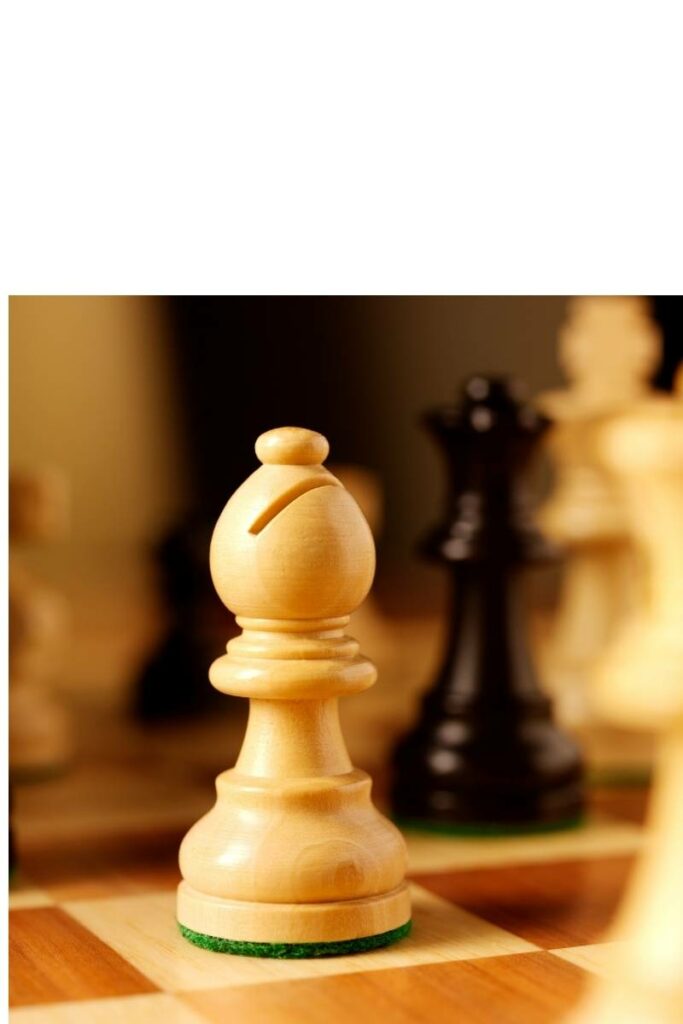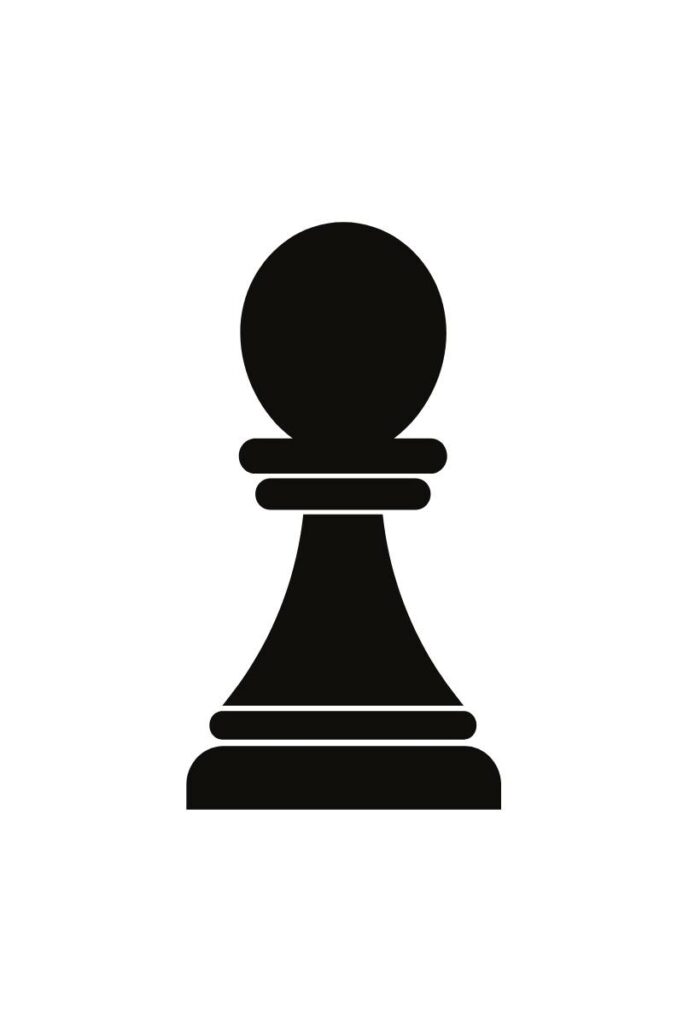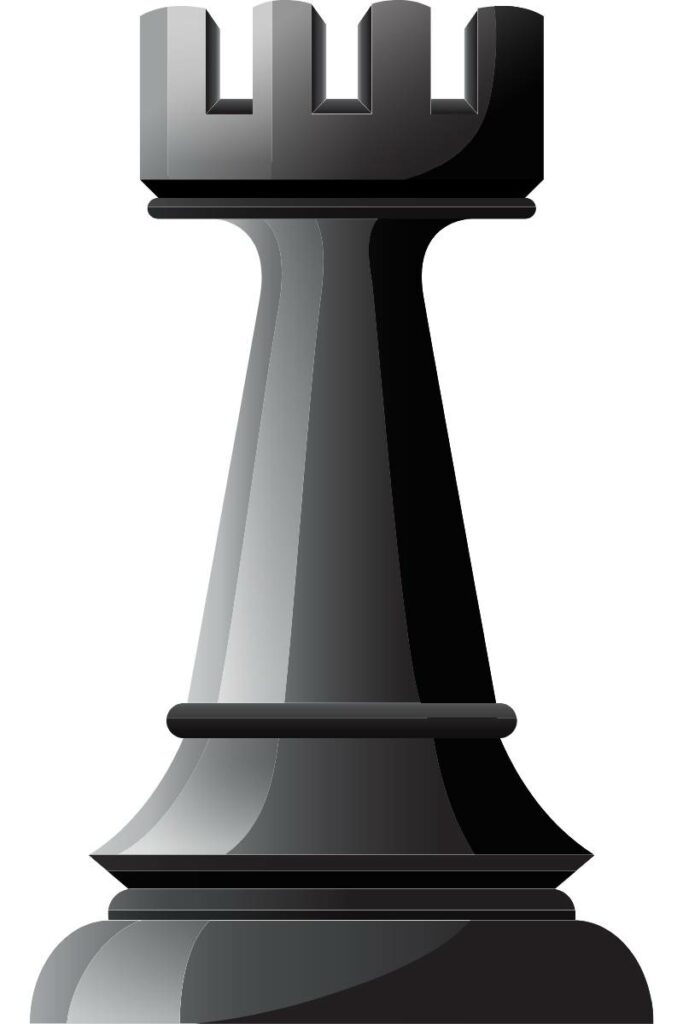Chess is a game of strategy, and it helps to know the that certain pieces can move diagonally. This article will explain how diagonal moves work in chess and what kinds of pieces can make them.
There are four pieces that can move diagonally
- You can move a bishop diagonally.
- The queen is the only piece that can move both horizontally and vertically, as well as diagonally.
- The pawns move forward and are the only pieces that can’t move backward at all. Pawns can move diagonally, but only when they’re capturing a piece.
- A King can also move diagonally, but only one square at a time.

The Bishop
Bishops can move diagonally and only diagonally. They can move any number of squares in a diagonal direction, but they cannot jump over other pieces or go to the same square as another piece (called “jumping” in chess). They also have no restrictions on how far they can move backward or forward.
Bishops are valuable because they are a long-range chess piece. Being able to reach all squares between your King and your opponent’s King so long as there are open positions to travel through.

The Bishop’s unique ability makes it particularly effective against most pieces. It is able to stop them from moving in a backward or forward direction into new territory by blocking off their lines of attack. Thereby reducing the effectiveness of many different types of pieces.
The Queen
The queen widely regarded as the most powerful piece in a game of chess. She can move in any direction, including diagonally and a straight line both forwards and backwards.
Compared to the other pieces, the Queen has more ways to move any number of squares on the chess board. The Queen is not only a great attacking piece, but also seen as the primary guard to the king (the most important chess piece) with her powerful moves.
The Pawn
The pawn is the most minor piece in chess. It can only move forward one space at a time (except for the first move where it can move two squares). They can only move diagonally when capturing an opponents piece. Pawns are useful thanks to a special move which allows them to be promoted to any other piece (except for a King) when they reach the end of their line of movement.
Pawn promotion is an important strategic consideration in chess because it can allow you to trade off one of the weakest pieces (like a pawn) for one that is stronger. This is one of the key chess piece moves you should learn in the rules of chess. If you can get your pawn to the other end of the board you can then swap it for another piece. Understandably players normally opt for the queen as she is the most powerful chess piece.

Can a pawn take a bishop?
Yes, but only if the bishop is standing on a square that is diagonally adjacent to the pawn’s current position. If there are any other pieces between the pawn and its target, it will be unable to move forward.
It is very rare in most cases for a pawn to take a bishop chess piece near the beginning of the game . But it can happen if the bishop is not well positioned or the opposing chess player is inexperienced.
The King
The King is the most important piece on the board. The goal of chess is to checkmate your opponent’s King, which means that it is in a position where it can be captured by a piece of your choosing. If this happens, you win! When we say captured, what we mean is that the king has no moves it can make without being in a square that would allow it to be taken by an opponent’s chess piece.

In chess rules there is a legal move known as castling. This is a special move to protect your king and activate your rook. It’s the one and only time in chess that you can move two pieces in one move. The king moves two squares to the right or left and the rook also moves directly to the other side of the king. You can only castle if neither the rook or king have moved yet and also if there are no pieces in the way. You are not able to use the castling move when in check, moving into check or during check.
The Bishop: A Unique Chess Piece
The bishop has two main functions in chess. First, it moves diagonally, and, second, it captures pieces.
The bishop is the only piece that can only move diagonally. Bishops are also unique in that it can move any length of diagonal it wants to.
The bishop can only attack squares of the same color as the square it started on. So if a White Bishop starts on a white square it can only attack squares of the same color.

Bishops are typically most effective when used in conjunction with other pieces, such as knights or rooks. By using the bishop’s diagonal movement, players can set up checkmate situations or otherwise put their opponent’s chess pieces in a difficult position.
There are two bishops in each player’s army, one placed on a white square and the other on a black square
How did the bishop get its name in chess?
The bishop piece predates the bishop’s mitre. It was originally named alfil, which means “war elephant” in Arabic. Its shape was based on elephant tusks. This was a symbol of the power of the church in the army of a king. In early chess sets, the bishop was often depicted with an elephant and a rider. As the game spread to countries without elephants, the piece looked odd. In fact, some people thought that it looked like a bishop’s mitre, hence its name.
Can a bishop move backwards?
Yes, a bishop can move backward.
Bishops can only move backwards diagonally. There are times when it’s advantageous. If you’re trying to escape from an attacking piece and need to move your bishop away from the danger zone, backward movement may be the best option.
How many squares can a bishop move?
A bishop can move any number of squares diagonally, as long as it does not cross over another piece.
The bishop can move as many squares as it wants, but it must always stay on the same color of the square from where it started.

Bishop’s movement is hindered only when it’s path is obstructed by any other piece. If the piece blocking it is of the same team then it must wait until that piece is moved to make way for it otherwise it is capable of taking down the opponent’s piece and moving to the location of that piece.
The Importance of the Bishop in Chess
In chess, the bishop is a very useful piece that can move diagonally across the board. Bishops are located between the king and queen on either side of the board.
Bishops are important pieces in chess because they control a lot of distance and can be used to put your opponent under pressure or in checkmate.
There are two types of bishops in chess, the dark-squared bishop and the light-squared bishop. Each type of bishop can only move on squares of its own color. This means that a dark-squared bishop can only move on dark squares, and a light-squared bishop can only move on light squares.
The bishop is a powerful piece in chess because it can control a lot of the board quickly. When you have both bishops on the board, you are said to have “control of the diagonals.” This means that your opponent will have a difficult time moving their pieces around the board because you can attack them from many different directions.
Bishops are especially valuable in the endgame when there are few pieces left on the board. Because they can control so much territory, bishops are often used to help set up checkmate positions. If you have one bishop and your opponent has none, you will have a significant advantage in the endgame.
The Benefits of the Bishop’s Diagonal Movement
In chess, the bishop is a powerful piece that can be used to control the board and put your opponent in checkmate. The bishop can only move diagonally, which means it’s important to place your bishops in strategic positions on the chessboard.
The benefits of the bishop’s diagonal movement include:
- The ability to control multiple squares on the chessboard
- The ability to attack and defend multiple pieces
- The ability to quickly move across the chessboard
When playing chess, it’s important to consider all of your options before making a move. The bishop’s diagonal movement can be a very powerful tool if used correctly.
Bishop vs Rook – which is better?
Unlike the rook, which can move through all available spaces along a row or column. The bishop is restricted to diagonal movement only. This means that it cannot control as much of the board as its counterpart.

The rook is a very powerful piece that can control large sections of the chessboard. Rooks can move forward or backward, as well as sideways. The rook probably gets its modern day name from the Italian word Rocca Which means fortress. A modern day rook resembles a castle tower with curved wall.
Bishop vs. Knight – which is better?
The knight is a fun piece to use in chess because of its ability to get around the board quickly. Unlike other pieces, it can move in an L-shape pattern, so it can move two spaces horizontally or vertically and then one space to the side.
Bishops, as we know, can only move diagonally. This means that they can cover more territory on the board than knights. However, since the Knight is able to move in an L-shape pattern it can move on both white and black squares on the board. This is a huge advantage.

On the downside, it will take more turns than a bishop to get from one side of the board to another.
The Drawbacks of the Bishop’s Diagonal Movement
The bishop’s diagonal movement can be considered a drawback in some chess games because it is not as versatile as the rook’s or queen’s movements.
For example, if the bishop is on the same color square as its king e.g. black, it cannot move to protect the king from a check or checkmate when the check move is being played from a white square.
Also, the bishop can be more vulnerable to attack than other pieces, such as the rook. This is because it can only move in one direction at a time and is limited to moving on the same colored square. Because of this it can make escape more difficult.
In addition, the bishop is often impeded by its own pawns. Unfortunately it cannot move past them without putting itself in danger of capture.
The Best Strategies for Using the Bishop
As we discussed, bishops are unique among the chess pieces because they can only move diagonally. This gives them a very distinctive role on the board, which can be both an advantage and a disadvantage.
Here are some tips on how to make the most of your bishops:
- One of the most important things to remember is that bishops work best in open spaces. If the board is cluttered with pieces, it will be more difficult for them to find good moves. But if you can create some open lines for them, they can be very powerful long range pieces.
- Bishops are also particularly effective when used in tandem with other bishop. Because they can cover so much ground, two bishops can control a large part of the board. This is especially true if one of the bishops is placed on a dark square and the other on a light square. In theory they will then be able to cover all of the squares on the board.
- Finally, don’t forget that bishops are also valuable when it comes to attacking your opponent’s king. If you can position them so that they have a clear path to the king, you will be able to put a lot of pressure on your opponent pieces. You would be able to force them to defend their king which will disrupt their attack plans and potentially give you an advantage.
The Bishop in Action: Famous Games
Bishops are unique among the chess pieces. They can be very powerful if used correctly, but they can also be very easy to block.
Bishops are often used to control the center of the board since they can move quickly from one side to the other. They can also be used to attack enemy pieces that are bunched up together since they can pick them off one by one.
In order for a bishop to be effective, it needs to have a clear path to its target. This means that it’s important to keep your bishops positioned in such a way that they won’t be blocked by your own pieces.

There are many famous games featuring bishops that have been played by some of the greatest chess players in history. Here are just a few examples:
- In 1851, French player Louis Paulsen defeated German player Adolf Anderssen in what is now known as the “Immortal Game.” Paulsen sacrificed his bishop early on in the game, allowing him to take control of the center of the board and ultimately win the game.
- In 1935, American player Samuel Reshevsky defeated world champion Alexander Alekhine in a famous game featuring some brilliant bishop play by Reshevsky.
- In 1963, Bobby Fischer defeated Boris Spassky in a game that featured a bishop sacrifice by Fischer. This sacrifice allowed him to take control of the center of the board and win the game.
Conclusion
I really hope this article has helped you understand better what pieces can move diagonally.
It can seem daunting as there is so much to learn in chess. But having a good understanding of the basic movements and tactics for each piece will allow you to build a stronger foundation.
I would strongly suggest that you read as much as you can about the game and play as many matches against as many players as possible. Much like real life, the harder you work at your chess game, the better your results are likely to be.
Video via chess.com
- Is Chess.com Premium Worth It? - May 25, 2023
- How To Set Traps In Chess? - May 25, 2023
- Chess.com Review - May 25, 2023
